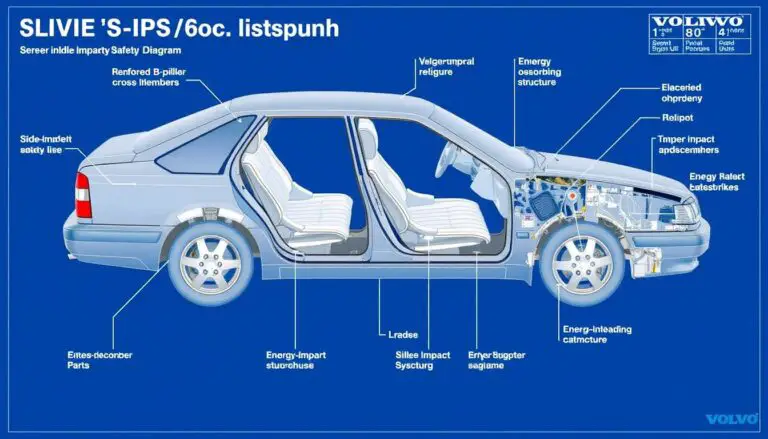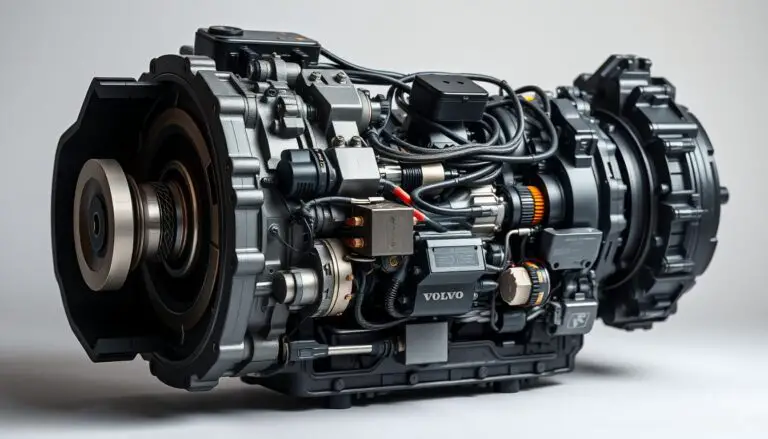This service guide explains the Volvo spark plug replacement cost in clear, practical terms so you can plan a smart maintenance decision for your vehicle.
You’ll learn how many spark plugs your engine uses, what type of plugs fit your car, and how parts and labor appear on an itemized invoice. This helps you read every line and avoid surprise bills.
We show how plug type, brand, and parts quality influence price and performance. We also cover labor drivers like engine access and intake removal so you know why some jobs take longer.
Learn when your owner manual suggests service and how timely maintenance prevents misfires, rough idle, and related drivability problems. A proper service restores ignition energy, stabilizes combustion, and improves power delivery.
Key Takeaways
- Understand parts vs. labor on an invoice.
- Correct plug type affects reliability and performance.
- Engine layout and access drive labor time.
- Follow the owner manual to avoid misfires.
- Professional service includes torque, gap, and road test.
Volvo spark plug replacement cost overview and today’s estimates
A clear cost snapshot helps you plan routine ignition service without surprises. In the U.S., most spark plug services for many cars fall between about $150 and $300. Exact pricing depends on engine layout, plug type, and how long the job takes at the shop.
Example benchmark: a recent average for a Volvo XC60 is $274 total — about $106 for parts and $168 for labor. This split shows why access and time matter: some engines need intake removal, which raises labor on the invoice.
- Shops usually replace plugs in full sets to keep combustion even across every cylinder.
- Service often includes diagnostic scan, inspection of old plugs for oil or deposits, correct torque, and a road test.
- A typical professional warranty is near 12 months/12,000 miles for peace of mind.
| Scenario | Typical Total | Parts | Labor |
|---|---|---|---|
| Standard inline 4 | $150–$220 | $40–$90 | $110–$130 |
| XC60 benchmark | $274 (avg) | $106 | $168 |
| Complex V6/V8 access | $220–$300+ | $60–$150 | $160–$200+ |
Volvo Spark Plug Replacement Cost
Knowing how parts quality and labor time affect the final bill helps you plan service with confidence.
Typical benchmark: a recent XC60 example averages $274 total — about $106 for parts and $168 for labor. Many professional shops include a 12-month/12,000-mile warranty, a diagnostic scan, correct torque installation, and a road test.
Budget for both parts and labor when you estimate service. The combined total reflects the plug quality you choose and the time needed to access the engine. If the layout is tight or turbocharged, labor often rises.
- Ask for an itemized invoice showing parts and labor and which plug was selected.
- Turnaround time can range from under an hour to several hours; confirm shop scheduling and days available.
- Compare prices, but weigh warranty coverage, technician skill, and parts quality—not just the lowest price.
| Scenario | Typical Total | Parts | Labor |
|---|---|---|---|
| XC60 example | $274 (avg) | $106 | $168 |
| Inline 4, easy access | $150–$220 | $40–$90 | $110–$130 |
| Complex/turbocharged engine | $220–$300+ | $60–$150 | $160–$200+ |
What drives the price: engine, parts, and labor factors
How many cylinders your engine has and which parts you pick change the bill more than you might expect.
Engine and cylinder count: Each cylinder needs one spark plug, so four, six, or eight-cylinder engines raise both parts and labor totals. More cylinders mean more removal and more time at the bay.
Plug type and quality
Typical plugs run about $15–$20 each. Premium options can exceed $50 and increase the parts line on the invoice.
Labor time by layout
Inline engines usually give top access and take less time. Transverse V6/V8 and boxer engines crowd tools and often add hours.
Ignition components that add cost
Coils, coil packs, and plug wires may be replaced if worn. Adding these components raises parts and labor compared with a plug-only service.
Access-related add-ons
Some vehicles require intake manifold removal or new valve cover gaskets. Shops will explain any extra time and the reason for the higher price.
“A clear estimate lists plugs, coils, and any access work so you know what drives the final price.”
- Technicians inspect removed plugs for oil or fouling to spot deeper combustion issues.
- In rare designs, rear plugs or tight heads can extend time significantly.
When to change spark plugs on your Volvo
Knowing the right interval helps you avoid performance drops and costly secondary repairs.
Mileage and time intervals: Many cars recommend a service window between 30,000 and 90,000 miles, with most models commonly at 50,000–60,000 miles. Follow the owner manual for the official guidance and mark the service on your maintenance calendar.
Miles and years to watch
Plan a change based on both miles and years. If the vehicle sits long or sees light use, age can still degrade spark life over years.
Driving conditions that accelerate wear
High-speed runs, heavy towing, frequent short trips, and severe service shorten life. If you use the car under these conditions, shorten the interval and inspect early.
Performance symptoms to act on
- Misfires, rough idle, or engine vibration.
- Hard starting, sluggish acceleration, or poor fuel economy.
- Check engine light or failed emissions testing.
Pro tip: Replace the full set at once and check coils and boots. If symptoms appear before the scheduled time, don’t wait—addressing worn plugs promptly protects the engine and catalytic converter.
What’s included in our spark plug service
Before touching any parts, technicians run a code scan and review live engine data to pinpoint ignition issues. This step guides the work plan and avoids needless parts changes.
Diagnostic checks and code scan to pinpoint ignition issues
We begin with a scan for codes and live data. That reveals misfires, coil faults, or fueling issues so the service addresses root causes.
OEM-spec spark plugs installed with proper torque
Technicians remove and inspect each plug for combustion deposits, oil traces, or heat damage. We install OEM-spec spark plugs using a calibrated torque wrench into the cylinder head. Proper seating ensures heat transfer and longer life.
Road test and service assurance
After reassembly, we reset learned values if needed and confirm idle, throttle response, and power under load. A road test checks cold and hot starts and drivability.
- Transparent estimate: parts and labor listed line by line.
- Warranty: a written 12-month/12,000-mile warranty on qualifying service.
- Scheduling: we allow extra time for tight engine bays and ensure the right auto tools and parts are on hand.
“A clear diagnostic-first process protects the engine and restores reliable ignition performance.”
Additional considerations for Volvo owners
A careful inspection of old plugs helps technicians spot oil, fuel, or heat-related problems early.
Always replace plugs in full sets. Changing only one or two can mask weak cylinders. A full set keeps firing balanced and extends the interval between services.
When removed plugs are checked, mechanics look for oil, ash, or fuel fouling. Those clues point to valve cover leaks, rich mixture, or combustion issues that need attention.
If oil shows up in plug wells, leaking gaskets are often the cause. Replacing those gaskets prevents repeat contamination of coils, boots, or plug wires.
Coils, wires, and added scope
Many modern cars use coil-on-plug designs. A weak coil or cracked boot found during testing should be fixed with the plugs to restore reliable spark.
Vehicles with spark plug wires may need new wires if resistance or damage is present. Fresh plug wires improve ignition energy under load.
- Tackling coils, wires, or gaskets during the initial service usually costs less than returning for intermittent misfires.
- A trusted shop will itemize recommended components and explain how each affects drivability and long‑term value.
- Prompt attention over the years prevents secondary damage and keeps your auto running smoothly between services.
| Issue found | Likely cause | Typical follow-up |
|---|---|---|
| Oil fouling | Leaking valve cover gasket | Replace gasket, clean wells, inspect coils |
| Black sooty deposits | Rich fuel mixture or worn injectors | Fuel system check, replace plugs |
| Cracked coil boot | Age or heat damage | Replace coil or boot with plugs |
Conclusion
,When you compare estimates, look for a written parts-and-labor breakdown that matches the work.
Typical ranges run $150–$300 for many vehicles; a recent XC60 example averaged $274 total with about $106 for parts and $168 for labor. Your final invoice reflects plug type, engine access, and labor time.
Prioritize timely replacement to steady idle quality, restore performance, and protect ignition components. Ask how transmission layout and packaging affect access, and request available days for a fast turnaround.
Book with a professional team so plugs are installed to correct torque and verified on the road. Request an itemized estimate and a short warranty discussion to approve the work with full confidence.
FAQ
What affects the overall price for changing plugs in a Volvo vehicle?
Several elements drive the invoice: engine design and cylinder count, the type and brand of parts used, labor time based on access and layout, and any related repairs such as coil or wire replacement. Shops may also charge extra if intake removal or gasket replacement is required.
What is a typical price range for a plug service in the U.S. market?
Expect a wide range depending on model and engine size. Basic services for a four‑cylinder vehicle usually cost less, while six- and eight‑cylinder engines demand more parts and labor. Parts commonly run from modest prices to premium levels, and labor varies by shop and engine accessibility.
Can you give an example estimate for a common model like the XC60?
For a mid‑range crossover such as the XC60, a representative invoice often totals in the low‑to‑mid hundreds: roughly one hundred dollars for parts and around one hundred fifty to two hundred dollars for labor, depending on regional shop rates and whether additional work is needed.
How do parts and labor typically break down on the bill?
Parts usually account for one third or less of the total for routine services, with labor making up the remainder. If coils, wiring, intake gaskets, or extra diagnostics are required, parts can push the total higher and extend labor time.
How many plugs does my engine need, and how does that impact price?
Inline four‑cylinder engines use four plugs, V6 engines use six, and V8 engines use eight. The number directly increases parts cost and often raises labor if access is restricted, so a six‑ or eight‑cylinder job will be notably more expensive than a four‑cylinder.
What types of plugs should I consider, and how do prices vary?
Standard iridium or platinum plugs are common and affordable, while premium iridium variants and performance‑grade plugs cost more. Typical retail prices for a single plug range from modest amounts up to fifty dollars or more for top brands, depending on the chemistry and OEM specification.
How does engine layout change the labor time?
Inline engines generally offer easier access, reducing labor time. V6 and V8 configurations, especially transverse layouts in tight engine bays, often require more disassembly. Boxer engines can also be labor intensive. Shops quote higher labor hours when intake or components block plug access.
Will I need to replace ignition coils or wires at the same time?
Coils and wires should be inspected during the service. Failing coils or deteriorated wires increase misfires and reduce performance, and replacing them adds parts and labor. Technicians recommend replacing coils when they show symptoms or fail diagnostic tests.
Are there common add‑ons that raise the invoice unexpectedly?
Yes. Removal of the intake manifold, replacement of valve cover gaskets, or repairing oil leaks discovered while accessing plugs will increase cost. Shops will usually present an estimate for additional work before proceeding.
When should plugs be changed based on mileage and time?
Service intervals vary by part type and engine. Many intervals fall between thirty thousand and ninety thousand miles, with most vehicles averaging fifty to sixty thousand miles for routine replacement. Always follow the vehicle’s maintenance schedule for best results.
What driving conditions shorten plug life?
Severe use such as frequent high‑speed driving, towing, short trips, and stop‑and‑go traffic can accelerate wear. Exposure to oil contamination from leaks also degrades plug performance and life.
What symptoms indicate a need for immediate inspection or replacement?
Misfires, a rough idle, reduced acceleration, poor fuel economy, and a persistent check engine light are classic warning signs that ignition components need attention.
What does a professional plug service normally include?
A full service typically includes a diagnostic scan for codes, removal and inspection of old plugs, installation of OEM‑spec parts torqued to spec, and a road test. Many shops provide a limited warranty on parts and labor, commonly around twelve months or twelve thousand miles.
Should plugs always be replaced in complete sets?
Yes. Replacing the entire set ensures uniform performance and avoids uneven wear or mismatched resistance that can cause misfires. Technicians also inspect old plugs for combustion clues to detect oil leaks or other engine issues.
How do oil leaks or failing coils change the repair scope?
Oil contamination on plugs usually means replacing gaskets or seals, which adds parts and labor. Coil failures require coil replacement and possibly additional diagnostics. Both situations increase the overall price compared to a straightforward plug swap.



